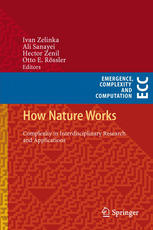

Most ebook files are in PDF format, so you can easily read them using various software such as Foxit Reader or directly on the Google Chrome browser.
Some ebook files are released by publishers in other formats such as .awz, .mobi, .epub, .fb2, etc. You may need to install specific software to read these formats on mobile/PC, such as Calibre.
Please read the tutorial at this link: https://ebookbell.com/faq
We offer FREE conversion to the popular formats you request; however, this may take some time. Therefore, right after payment, please email us, and we will try to provide the service as quickly as possible.
For some exceptional file formats or broken links (if any), please refrain from opening any disputes. Instead, email us first, and we will try to assist within a maximum of 6 hours.
EbookBell Team

4.3
28 reviewsThis book is based on the outcome of the “2012 Interdisciplinary Symposium on Complex Systems” held at the island of Kos. The book consists of 12 selected papers of the symposium starting with a comprehensive overview and classification of complexity problems, continuing by chapters about complexity, its observation, modeling and its applications to solving various problems including real-life applications. More exactly, readers will have an encounter with the structural complexity of vortex flows, the use of chaotic dynamics within evolutionary algorithms, complexity in synthetic biology, types of complexity hidden inside evolutionary dynamics and possible controlling methods, complexity of rugged landscapes, and more. All selected papers represent innovative ideas, philosophical overviews and state-of-the-art discussions on aspects of complexity.
The book will be useful as instructional material for senior undergraduate and entry-level graduate students in computer science, physics, applied mathematics and engineering-type work in the area of complexity. The book will also be valuable as a resource of knowledge for practitioners who want to apply complexity to solve real-life problems in their own challenging applications. The authors and editors hope that readers will be inspired to do their own experiments and simulations, based on information reported in this book, thereby moving beyond the scope of the book.